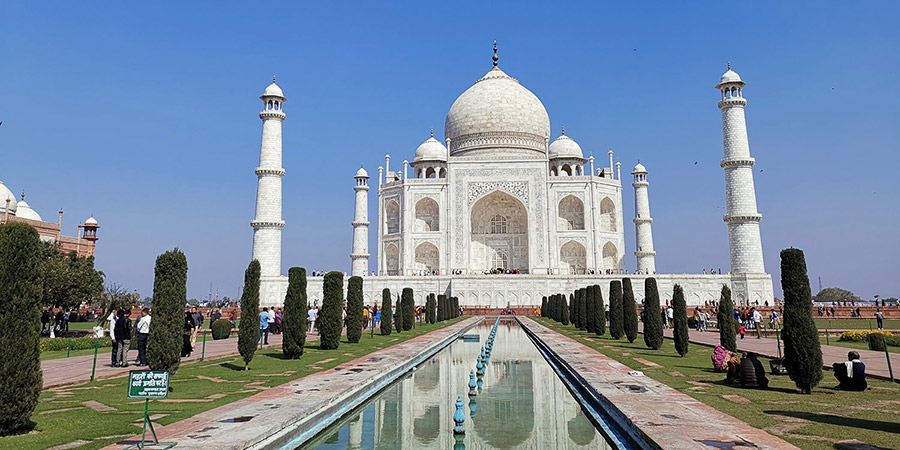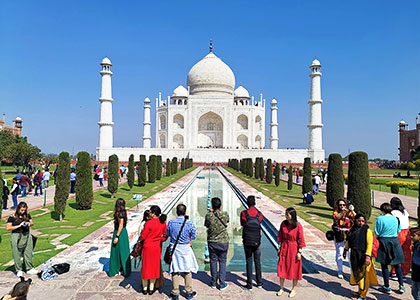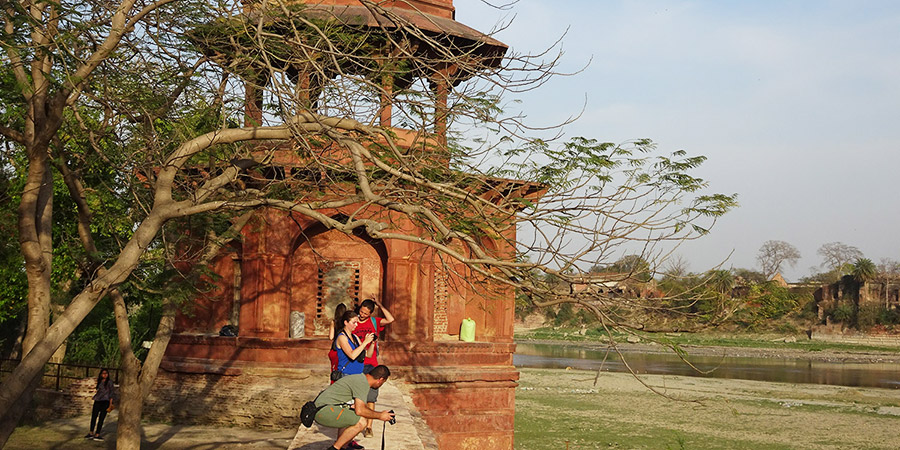10 Historic Places in Agra You Need to Visit
Agra is the land of paradoxes so profound that a traveler first subconsciously notices the stark opposites and then moves on to what he is interested in. Having said that, it is a minuscule difference compared to the vast lands and majestic buildings full of history and awe. The raw rustic streets are still home to the spectacular wonders of the world.
Agra is home to many historical monuments that tell stories of yesteryears. It was also made the capital of India during the Mughal dynasty rule by Sikandar Lodhi. It saw five generations’ rule over India – Akbar, Jahangir, Shah Jahan, and Aurangzeb. One of the reasons that the city has palaces, forts, and mausoleums in such big numbers. Post-independence, Agra became the industrial city and gained popularity as a tourist destination with many UNESCO World Heritage Sites under its belt. Here are 10 historic places in Agra you should not miss.
1. Taj Mahal:
One of the New Seven Wonders of the World, Taj Mahal symbolizes symmetrical architecture, the specialty of Mughal designing. It is definitely one of the top 10 historic places in Agra you need to visit. Built by Mughal emperor Shah Jahan, as a shrine and cenotaph for his beloved wife Arjumand Bano Begum famously known as Mumtaz Mahal. Built-in Persian and Mughal architecture, and shaped with the best Makrana Marble, Taj Mahal’s beautiful dome attracts attention from far distances. There are many verses from the Quran calligraphed on the finely carved walls and all over the complex.
The best time to visit the Taj is early morning at sunrise or during the sunset. The colors of nature change the mausoleum into a piece of magic, blushing it in myriad shades of pink and orange. The fountains in the foreground and the pious Yamuna in the background lend tranquility to the place. The Taj is closed on Fridays for maintenance. A government-approved ID card is a must to enter the place.

Taj Mahal with Pure Marble
|
See more about Taj Mahal's Rules & Regulations
2. Fatehpur Sikri:
Founded by Akbar, Fatehpur Sikri is a historical city close to the city of Agra that enjoyed being capital of the Mughal Empire, before the status was given to Agra. The city housed buildings, gardens, harems, mosques, and other utility structures.
|
|
3. Musamman Burj:
This has a special significance in Mughal history as being the Octagonal tower built by Shah Jahan as a palace for Mumtaz Mahal in the year 1631–40. This is also the place where his son Aurangzeb imprisoned him along with his younger daughter Jahanara Begum until his death. A multi-storied tower inlaid with precious gemstones, the citadel provides an excellent view of Agra City. The floor at the lower ground has been paved with gilded copper to resemble the board game Pachchisi, hence also called Pachchisi Court. The marble jharokha overlooks the river Yamuna and glistening the Taj Mahal. Shah Burj is also one of the best historic places in Agra not to be missed.

Panoramic View of Agra City from Musamman Burj
|
4. Agra Fort:
Made of red stone, the fort dates back to the 16th century. The fort is also called the Red Fort. Many splendid palaces such as the Khas Palace and Jahangir Palace are located inside this medieval period building that is a legacy of its own. Diwan-e-Khas and few magnificent mosques are also located here. Built under Akbar’s rule in 1565, and situated on the banks of Yamuna river, this increases the magnificence of its complimenting Taj manifold. Musamman Burj, Sheesh Mahal, Moti, and Nagina Masjid are few of the historical places in Agra with structural beauties not to be missed.
|
|
|
5. Mankameshwar Temple:
Counted amongst highly revered temples of India, this temple is dedicated to Lord Shiva. The shivling installed here dates back to Dwapar Aeon and is completely covered in Silver. The premise has other temples of Goddess Ganga, Lord Krishna, Goddess Saraswati, Goddess Gayatri, Lord Hanuman, Lord Rama, Narasimha, Kaila Devi, and other deities. Hundreds of devotees visit to pay homage to the deities every day.
6. Guru ka Taal:
Located at just 5 kilometers from Sikandra, this revered place of pilgrimage waited for its share for fame until the 1970s when Sant Sandhu Singh Mauni built this structure. At this place Guru Tegh Bahadur, the ninth Sikh Guru surrendered to the then Mughal king Aurangzeb. The Taal was a water reservoir of those times. A holy place for Sikhs to worship, it is open from dawn to dusk every day for devotees and tourists from far and away to pay respect to the Guru. The Taal has historical as well as religious importance as four out of ten Sikh Gurus have visited the 17th century red stone beautiful elaborate carvings. The Guru Ka Taal is located near the Bilochpura Railway station. There is no entry fee, one of the best historical places in Agra to visit.
7. Jodha Bai Ka Rouza:
Jodha Bai, a Rajput woman, was Akbar’s favorite queen. This palace was made by Akbar for her, suiting her simple, sophisticated yet elegant life. The palace was made in Rajasthani and Gujarati architectural styles with some inputs from Mughal designs. Located in Fatehpur Sikri, Taj Mahal can still be seen from the slit openings in the walls of the palace. The palace is also called the Mariam-Uz-Zamani Palace. The mural is artistic, tasteful and based on traditional designs. The predominance of Hindu design elements such as peacocks, elephants, lotus, and ghant mala is a testimony to the powerful position the Queen held in those times. Also in the times of Harem culture, Jodha Bai’s palace is an important statement.
8. Itimad-ud’-Daulah’s Tomb:
This red sandstone structure is also called the Baby Taj due to its striking resemblance to the Taj Mahal. Located on the banks of the Yamuna River, the structure is flanked by beautiful gardens, watercourses, walkways and hexagonal towers. This was commissioned by Nur Jahan as a mausoleum for her father Mirza Ghiyaz Beg before the idea of the Taj Mahal was even born. This tomb was the base model for the Taj Mahal. Sunlight peeping in through carved jalis presents a panorama difficult to forget. It is also a memorable historical place in Agra to go.

Tomb of I'timad-ud-Daulah
|
9. Jama Masjid:
Originally named the Jami Masjid, Jama Masjid was built by Shah Jahan. The best artisans, engineers, sculptors, and laborers were involved in making of this grand mosque, one of the biggest in the world. Its size can be estimated from the fact that it can accommodate more than 25,000 people at any given point. Located on the west side of the Agra Fort, it has four towers and three gateways. There are Quran verses inscribed on deerskin. The mosque is open on all days of the week except on Fridays. The entry is free in the mosque, however, to click pictures one needs to pay for tickets.

Splendid Jama Masjid
|
10. Akbar’s Tomb, Sikandara:

Akbar’s Tomb in Agra
|
|
|
|




